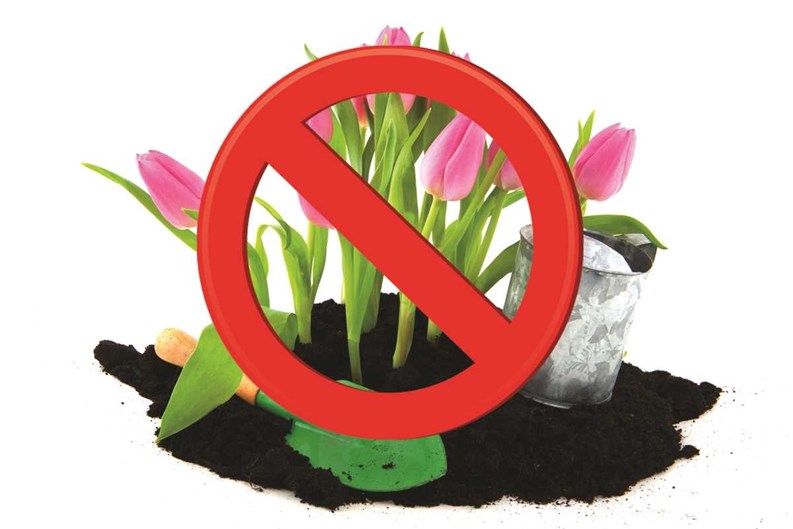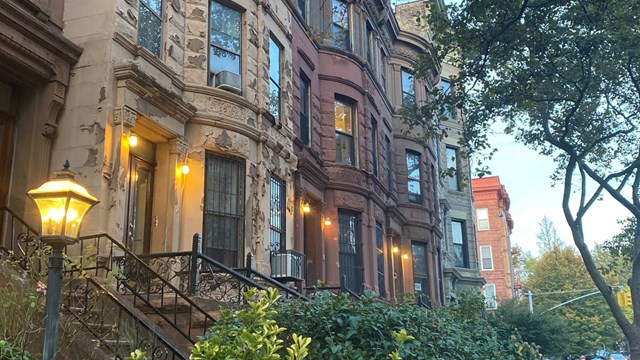Southerners find it cold here…Midwesterners consider the winters mild…and Europeans are shocked by the humidity of a New York summer.
Not unlike the city itself, the weather of New York offers almost everything, which the residential landscaping perfectly reflects. Establishing and maintaining an attractive landscape in a climate this varied is a definite challenge, perhaps even more so for multifamily environments in urban or suburban areas.
When one factors in additional foot traffic, pets, litter, and pollution commonly associated with multifamily dwellings, it can be tough for plants, trees, and flowers to survive…let alone thrive. Especially after a winter of snow and way-below freezing temperatures, there's plenty to consider in making sure a community's landscape is in top shape for the upcoming season.
Down the Garden Path
In an effort to save money, some boards and grounds committees create do-it-yourself landscaping rather than hiring professionals. Weeding flowerbeds and raking leaves is one thing; but if a committee chooses the wrong type of plant, or puts a shrub, tree, or flowerbed in the wrong place, the results may be costly. In addition to being an eyesore, misguided plantings can result not just in replacement costs for dead or damaged plants, but even repair costs for structural damage to roofs, foundations, or pavement.
This is not to say that a volunteer landscaping or gardening committee is a bad idea…far from it. If a community includes folks who truly enjoy the physical labor associated with weeding and planting they can absolutely participate, but perhaps under the guidance of a landscaping professional hired on a consulting basis to develop a sound plan with site-appropriate plants. With the New York climate, plants that can adapt to extremes in the weather are an obvious choice, but investing in a consultant to get a proper plan in place can save a considerable sum in the long run, also.
Bringing an Expert on Board
Avoid costly landscape mistakes by working with a professional. Landscaping may not seem like a very high priority when compared to other facets of managing a property; but, in fact, a community's landscape is the first feature guests and potential buyers see. “If landscaping is not meeting expectations, you can lose curb appeal which then risks potential sales and home values,” says Cindy Rusniak, a property supervisor at FirstService Residential, which has offices in New York and around the country.
Once the board has a rough idea of their vision, expectations, and budget, reach out to a professional; develop a plan over the contract terms with the chosen vendor. “It's very important for landscape professionals to meet with the landscape committees and property managers in the winter to see what their goals and expectations are for the upcoming season,” says Joe Costanzo, president of C&C Landscape Contractors, based in Brooklyn. Mother Nature can't reschedule. If the proper plan isn't in place by mid-April, certain aspects of landscape work will be difficult to revisit once plants have begun to bloom.
To the layman, gardening and landscaping might get complicated when it comes to weather, soil, and other variables. According to Costanzo, developers often cause landscape headaches in new communities. “They'll put up a new building and they'll just throw in the cheapest stuff—the most inexpensive tree—and they don't care so much what it looks like or that it is a nice tree, but they wanted some gratification when they show their building. They plant them way too close to an entrance or to a window, or in a bed that's not large enough to accommodate them,” says Costanzo. In the rush to get units sold, developers can result in unnecessary expenses to fix problems that could have been avoided in the first place
Everybody likes a colorful, fragrant flower, but the functionality of the plant can be more important than almost any other factor in creating successful curb appeal. “Selecting the right plants for the right space means taking into consideration the mature size of a plant…in other words, the most common offender is azaleas. Everybody buys their mom a beautiful azalea plant for Mother's Day. It's in a little one gallon container; it gets planted at her house right next to the front door. The mature size of an azalea is 12-feet-wide. Here, years down the line--four or five years down the line—you need a machete to get through a pathway through to the front door, because it was planted too close…you need to leave room to accommodate that,” says Costanzo.
These issues are particularly acute when it comes to tree placement. When an HOA wants trees included in a landscape design, consult a certified tree expert to make sure both the species proposed and their intended places are appropriate. An arborist will have a deeper understanding of proper tree selection and planting techniques. On larger projects, arborists work in coordination with landscape architects and landscapers to insure that the final project will be sustainable…and not require a great deal of upkeep.
Ryan Duff is a state-certified arborist with the Wyckoff, New Jersey offices of Almstead Tree & Shrub Company. He explains that an arborist will have a deeper understanding of proper tree selection and planting techniques. “On larger projects, arborists work in coordination with landscape architects and landscapers to insure that the final project will stand the test of time, and be as maintenance-free as possible,” Duff says.
If an association does not have funding for a professional arborist or general landscaper, associations should do as much research as possible beforehand, and use hands-on project management during the installation of new landscaping to avoid issues that may have been missed, or unforeseen changes. Another golden rule relayed by experts is that proposed planting designs should always be accompanied by a maintenance program. The program can provide illustrations of the desired look, and tips on proper pruning and nutrition that will ensure plant vigor and longevity.
Communities tend to get more excited about trees and flowers; after all, those are the elements of the landscape that are the most visible and appreciated. It can be easy to overlook lawn care--which may not be as sexy but if improperly treated, can be more of an eyesore than any overgrown plant. Particularly in suburban communities, lawn care can be just as--if not more important than—the surrounding plant life. Turf can sometimes take up more room in the property than the building itself. Landscapers with the right experience make sure that fertilization isn't skipped and grass isn't weakened, which can happen when treatments are applied at the wrong time. Experts say that if applications are completed per horticulture standards and weather conditions, crabgrass and weeds will be pretty much nonexistent if they're taken care of at those specific times with the proper chemicals.
We Need a Do-Over
If a board is already dealing with an overgrown landscape problem, there are ways to make corrections. Rejuvenate pruning or “winter pruning” is always the less expensive and less aggressive option. Most deciduous plants and trees can be severely reduced in height and shape over the dormant winter months. This option is considerably less expensive than removing, designing, and installing new plant material throughout an entire property.
An investigation of restorative pruning techniques such as plunge pruning, or proportional canopy reduction over a number of growing years can be helpful. There are certain chemical products that retard growth, and reduce the need for frequent pruning. Replanting will always be the most costly option.
Besides overgrowth of trees and plants, landscapers have to deal with soil compaction from foot traffic in multifamily environments. Once these areas become compacted and sunken, they tend to collect water, which reduces oxygen and can result in damaged or killed root systems. An arborist using an Air Spade™ can correct compaction by breaking up the compacted soil with air pressure and incorporating compost.
As with most facets of maintaining a property, associations and landscapers alike have to keep good communication. “A good landscaper will take pride in their attention to detail. This includes good communication and proactively bringing issues to your attention. Since the landscaper is the expert they should notify you when vegetation end of life is approaching, and when plants need to be removed or replaced,” says Rusniak.
Duff agrees, and offers up a few additional tips: “Take the time to mulch properly; the benefits of that cannot be overstated.” Also, he suggests maintenance and landscape crews watch for salt damage to plants and shrubs after harsh winter weather. “An arborist can recommend applications with a product like Humate to bind the excess sodium, making it unavailable to the plants,” he explains. “Soil testing is particularly helpful in determining salt levels in the soil.” Lastly, Duff recommends staying on task with pruning, even when everything “seems fine.” Skipping a year will only result in the need for more dramatic--and more expensive--cuts at a later date.
Landscaping is not a “one and done” project but an ongoing endeavor requiring time, talent, and funding to create and maintain the best community appearance all year long. Taking advantage of expert recommendations and suggestions is the smart way to enhance and preserve both the beauty and the investment in any community’s landscaping.
Anne Childers is a freelance writer and a frequent contributor to The Cooperator. Staff writer Tom Lisi contributed to this article.







Leave a Comment